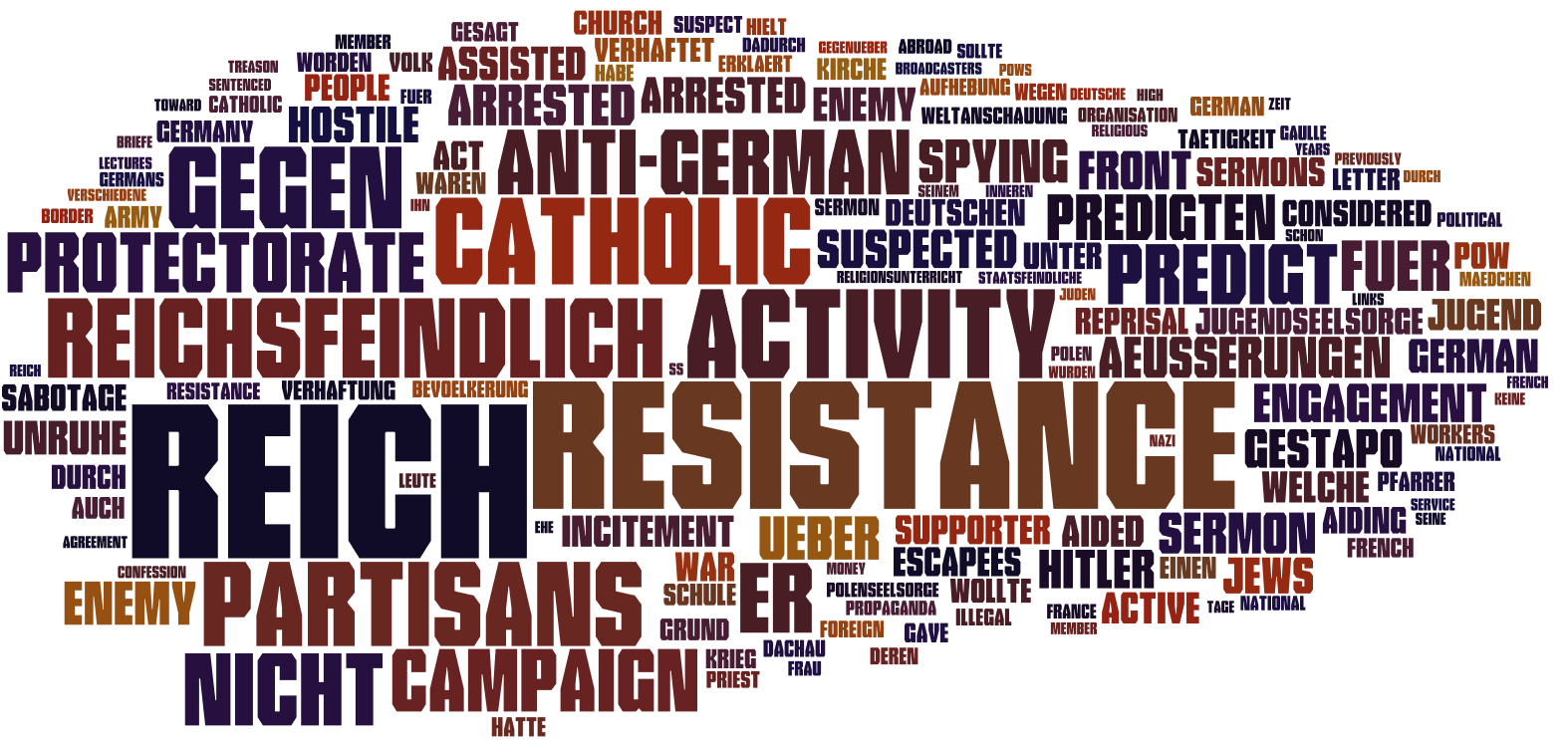Distribution of Incarcerated Clergy across Europe Using Carto
Above is a map generated using Carto showing the distribution of incarcerated clergy across Europe, with Dachau Concentration Camp plotted in red. The breakdown of nationality of clergy included in the above map is as follows:
- Polish: 66.4%
- German: 12.0%
- French: 7.9%
- Czech: 4.5%
- Dutch: 2.2%
- Belgian: 1.9%
- Italian: 1.6%
- Slovenian: 1.1%
- Yugoslavian: 0.6%
This can be compared to the numerical breakdown of the 2,720 total incarcerated clergy by nationality [1]:
- Polish: 1,780 (65.4%)
- German: 447 (16.4%)
- French: 156 (5.7%)
- Czech: 109 (4.0%)
- Dutch: 63 (2.3%)
- Yugoslavian: 50 (1.8%)
- Belgian: 46 (1.7%)
- Italian: 28 (1.0%)
Restricting to the 2,579 Catholic clergy, the numbers become [2]:
- Polish: 1,748 (67.8%)
- German: 411 (15.9%)
- French: 153 (5.9%)
- Czech: 93 (3.4%)
- Belgian: 46 (1.8%)
- Dutch: 39 (1.4%)
- Yugoslavian: 35 (1.4%)
- Itaian: 28 (1.1%)
Recall that each priest included in the map was subject to the selection bias of needing to have an associated diocese, which is only possible if the priest was Catholic (this selection bias is discussed at length on the Histograms page in the Methodology section). To test whether the other selection criteria for including a priest in the dataset (namely, having a birthdate, arrest date, final arrival date at Dachau, and fate listed in the CSV file) introduced other biases, we can compare the above breakdown of Catholic clergy to the breakdown of the clergy included in the map. Indeed, the percentage differences based on nationality are of order a few percent, suggesting that there was no substantial selection bias with respect to nationality introduced by cleaning the dataset.
At the date of liberation on April 29th, 1945, the 7th Division of the United States Army conducted a survey of the 31,432 surviving prisoners of Dachau and reported the following populations, broken down by nationality [3]:
- Polish: 9,082 (28.9%)
- Russian: 4,258 (13.5%)
- French: 3,918 (12.5%)
- Slovenes: 2,907 (9.2%)
- Italians: 2,184 (6.9%)
- Czechs: 1,632 (5.2%)
- German Nationals: 1,173 (3.7%)
It is interesting to note that this breakdown differs dramatically from the breakdown of the nationalities of priests incarcerated at Dachau. Though the breakdowns for priests included those who died while incarcerated, and the overall breakdown at the time of liberation does not include those who died before liberation, I would not expect this discrepancy to impact the percentages appreciably, as 37% of clergy died while incarcerated. [4] It is interesting to note that while these breakdowns do not correlate between the clergy and the overall populations, the transportation patterns and incarceration times do, as detailed in the Animated Maps using Carto and Breakdowns by Nationality pages.
1 Page 69. Pfeil, Hugo. Leben, Leiden, und Sterben der Kath. Priester im KZ Dachau. Eppelborn: Stiftung Kulturgut Gemeinde Eppelborn, 2014.
2 Page 69. Pfeil, Hugo. Leben, Leiden, und Sterben der Kath. Priester im KZ Dachau. Eppelborn: Stiftung Kulturgut Gemeinde Eppelborn, 2014.
3 Page 65. United States Army, Seventh Division. Dachau. 1945. (a photocopy of the official report by U.S. Seventh Army released within days of the camp's liberation by elements of the 42nd and 45th Divisions)
4 Page 44. Marcuse, Harold. Legacies of Dachau: The Uses and Abuses of a Concentration Camp, 1933-2001. Cambridge: Cambridge University Press, 2001.
